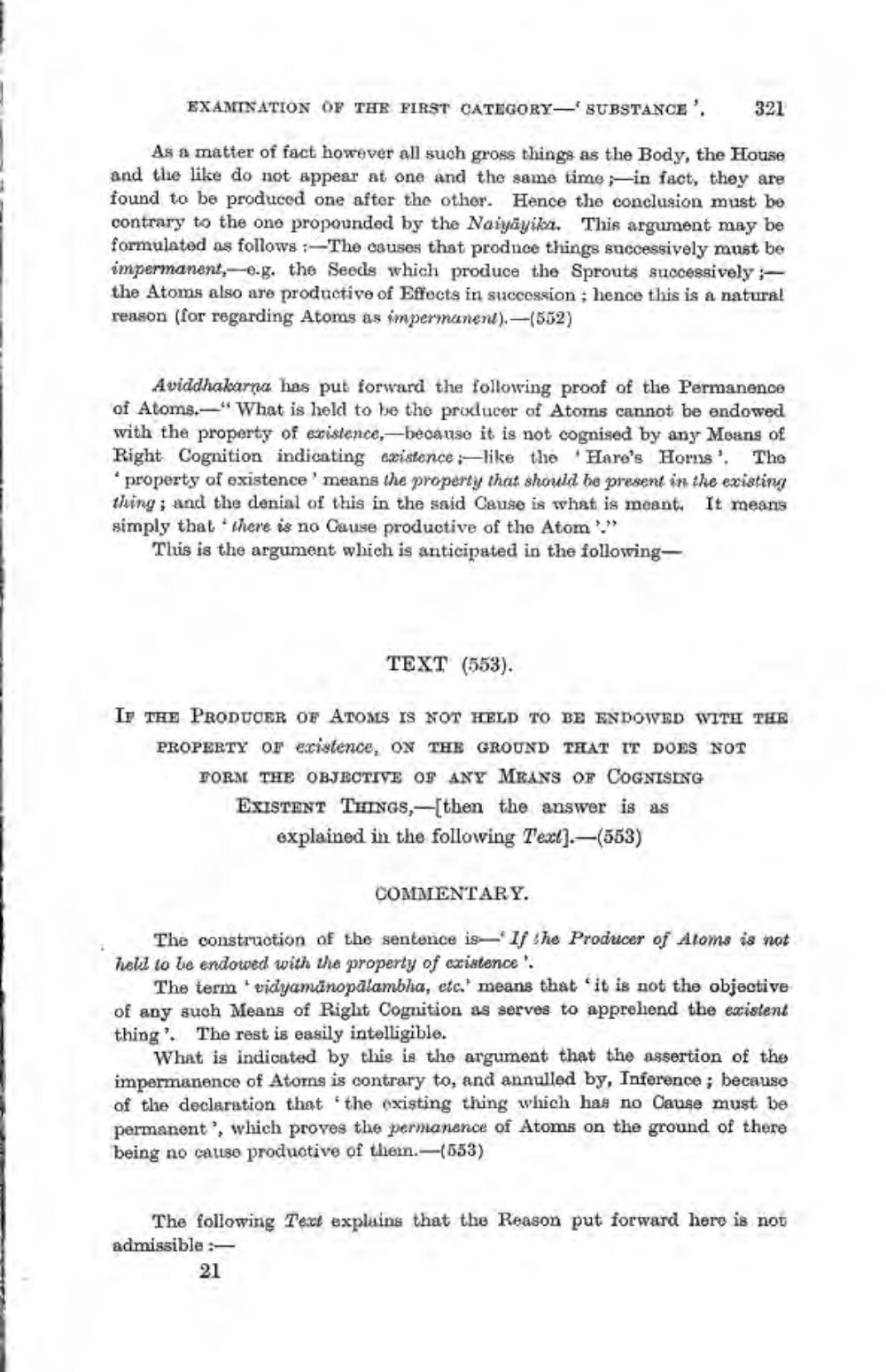________________
EXAMINATION OF THE FIRST CATEGORY_' SUBSTANCE'.
321
As a matter of fact however all such gross things as the Body, the House and the like do not appear at one and the same time in fact, they are found to be produced one after the other. Hence the conclusion must be contrary to the ono propounded by the Naiyāyika. This argument may be formulated as follows :-The causes that prodnce things successively must be impermanent,-.g. the Seeds which produce the Sprouts successively - the Atoms also are productive of Effects in succession; hence this is a natural reason (for regarding Atoms as impermanent).-(582)
Aviddhakarna has put forward the following proof of the Permanence of Atoms.--" What is held to be the producer of Atoms cannot be endowed with the property of existence,--because it is not cognised by any Means of Right Cognition indicating existence ;-like the Hare's Horns! The
property of existence' means the property that should be present in the existing thing; and the denial of this in the said Cause is what is meant. It means simply that there is no Cause productive of the Atom."
This is the argument which is anticipated in the following
TEXT (553)
IF THE PRODUCER OF ATOMS IS NOT HELD TO BE ENDOWED WITH TIR PROPERTY OF existence, ON THE GROUND THAT IT DOES NOT FORM THE OBJECTIVE OF ANY MEANS OF COGNISING EXISTENT THINGS,—[then the answer is as
explained in the following Text].-(553)
COMMENTARY.
The construction of the sentence is If the Producer of Atoms is not held to be endowed with the property of existence.
The term vidyaminopalambha, etc.' means that it is not the objective of any such Means of Riglet Cognition as serves to apprehend the existent thing'. The rest is easily intelligible.
What is indicated by this is the argument that the assertion of the impermanence of Atoms is contrary to, and annulled by, Inference; because of the declaration that the existing thing which has no Cause must be permanent, which proves the permanence of Atoms on the ground of there being no canso productive of them.-(553)
The following Text explains that the Reason put forward here is not admissible :
21




